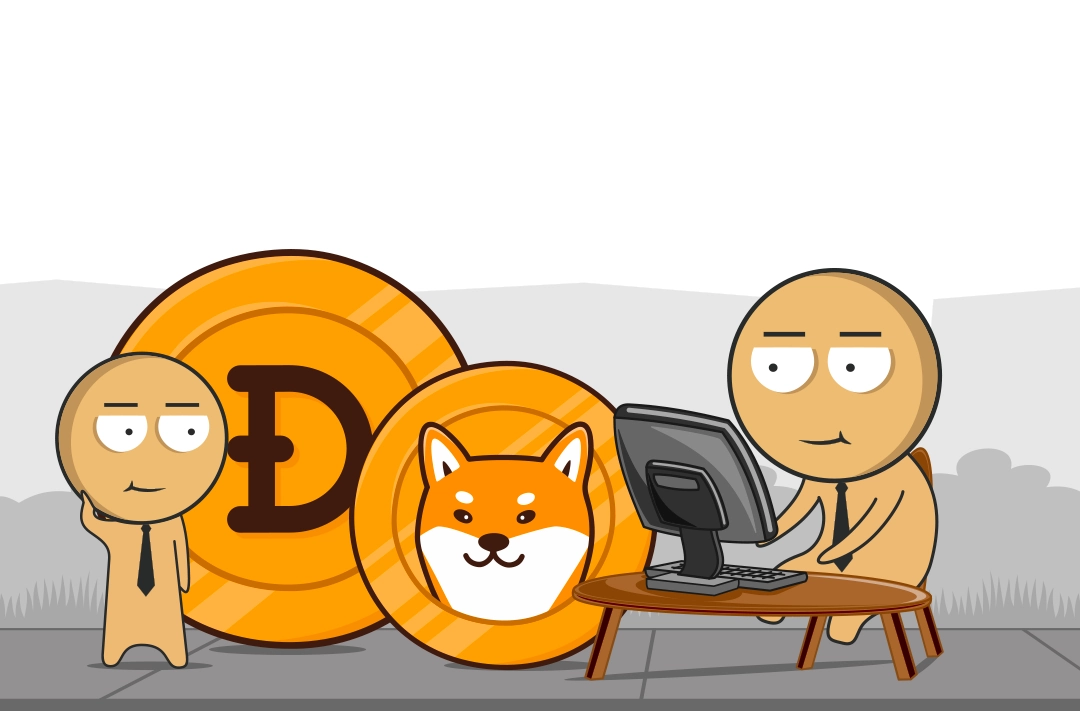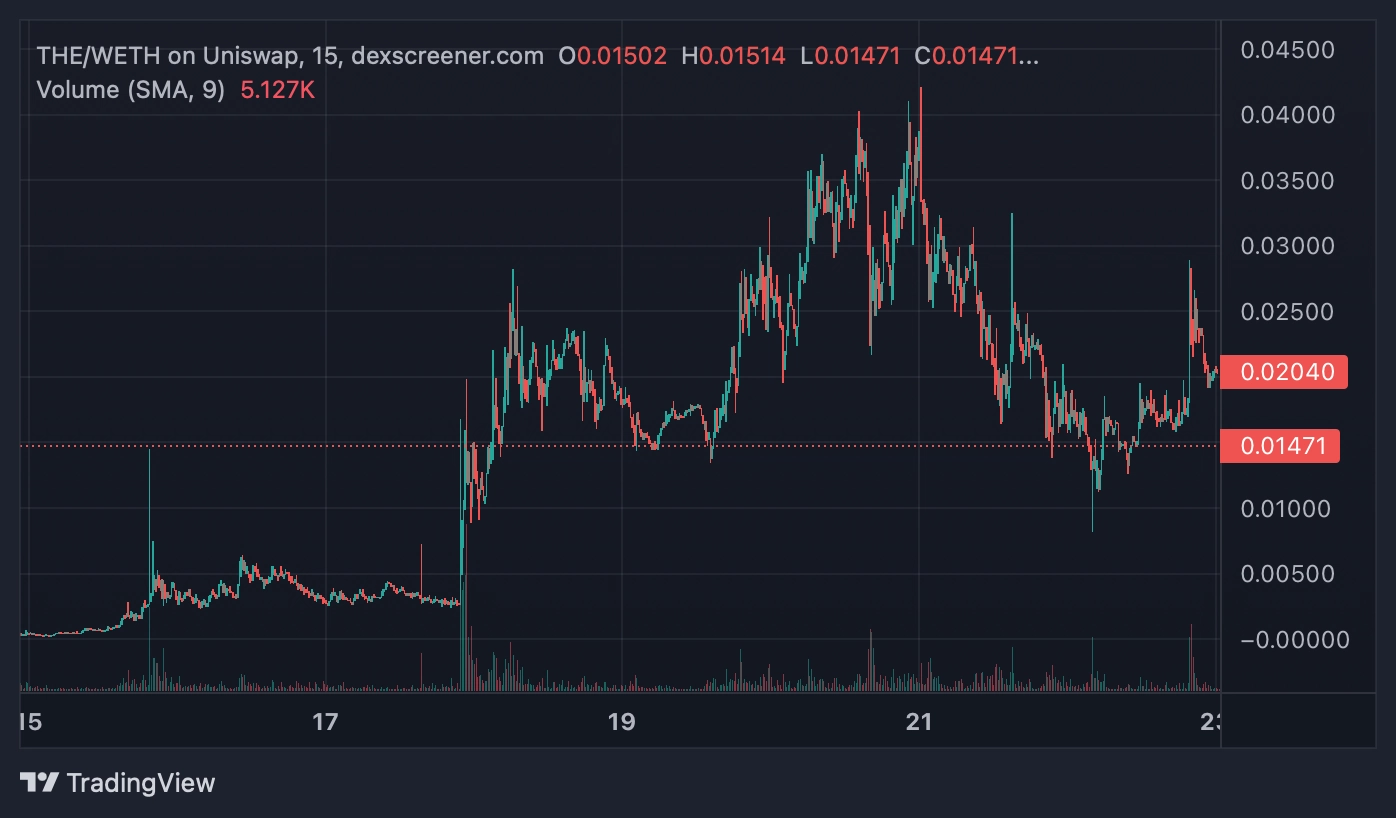“You can't get bored.” Is it possible to earn on meme coins?
High-risk tokens attract traders with their volatility and quick profits

24.10.2022
1794
6 min
1
During a period of relative calm in the crypto market, new meme token trends emerge. In search of volatility, quick profits, and thrills, traders pour millions of dollars into unsecured meme coins whose prices skyrocket by thousands of percent.
On October 14, Ethereum (ETH) founder Vitalik Buterin jokingly tweeted that a protocol called “THE” could be created to take advantage of how often that article is used when promoting it. Almost any phrase in the English language could be considered a reference to such a project. In the comments to the tweet, there was talk about expecting THE token to appear, and on the same day, it was indeed launched and available for trading on the decentralized Uniswap exchange.
Since October 17, the price of THE has risen 119 118%, going from $0,0000384 to $0,04578 in just a few hours. At its peak, the token's market capitalization exceeded $50 million, and more than 5000 exchange users took part in trading.

THE/WETH price chart, source dexscreener.com
Anyone can create a token on Ethereum or any other blockchain that supports smart contracts. The token can be placed on a decentralized exchange (DEX) and, if there is a pool of liquidity, it can be traded. The surge of activity around THE provoked the appearance of cryptocurrencies with names from other articles and pronouns – THIS, THEY, THAT, and even the German DIE, whose token of the same name has generated over $400 000 in liquidity.
Most of the article tokens on the BNB Chain and Solana blockchains were blatantly fraudulent honeypot projects with a contract that prohibited the ability to sell the tokens. “What have I done,” Buterin wrote on Twitter, commenting on what was happening.
Meme coins can be different, explains co-founder of ENCRY Foundation Roman Nekrasov. There are quite humorous ones, like THE and DIE, and there are frankly fraudulent ones, like SQUID, created at the peak of the popularity of the series "Squid Game" on the Netflix platform. “That said, there are [cryptocurrencies] quite applicable in life, such as Dogecoin (DOGE) or Shiba Inu (SHIB). Both have years of existence in the market, a team of developers, an entire ecosystem, and most importantly, a huge army of fans behind them,” the expert comments.
Meme coins in general are focused on speculators, says Nekrasov. Members of communities and developers of cryptocurrencies DOGE and SHIB quite recently started working on reducing the reputation of speculative assets for their projects. According to ENCRY Foundation representative, meme coins attract speculators because, in periods of a lull in the cryptocurrency market, you can earn on them due to the greater volatility of their rate compared to the leading cryptocurrencies, among which are BTC or ETH.
In search of volatility
A surge in trading in new meme coins led to a noticeable increase in activity on Uniswap. According to Defiant Terminal, within 48 hours after the start of trading THE token, the number of completed transactions on the exchange increased by 61%, and the growth of daily users was 40%. This number of daily transactions on Uniswap (over 200 thousand) was last recorded in June 2021.
At the moment THE-WETH pair became the second most popular on the exchange, second only to USDC-ETH. A week earlier, the XEN token was launched, which also did not offer any idea or variant of its application. At the same time, there was such a stir around XEN that the token became the leader in fee burning on the Ethereum blockchain, making the cryptocurrency deflationary for the first time after its transition to the Proof-of-Stake (PoS) algorithm.
According to Nekrasov, interest in meme coins increases during the lull in the crypto market, when it is difficult to predict the further direction of the price surge of bitcoin and other cryptocurrencies. “Crypto investors like risk, and you can't get bored with meme coins. It's like going to the casino: it will grow or not,” the expert comments, adding that usually a trader or investor “has fun” with meme coins using only that part of the capital, which he or she is willing to risk.
The risk sometimes justifies itself. According to an observation by the author of the Telegram channel DEFI Scam Check, a certain unknown user bought 20 million THE tokens after the launch of trading, spending 0,067 ETH ($85 at the time of purchase). Then, with THE's price skyrocketing, by gradually selling the tokens, he managed to get a total of 211 ETH (more than $284 000 at the October 24 exchange rate) for them.
“Frankly, I don't believe in any meme coin strategies,” Nekrasov comments. In his opinion, as an investment, it is worth betting on those of them, which are developing, and have an ecosystem and infrastructure for decentralized financial applications (dApps), that is, coins such as DOGE or SHIB.
According to Sergey Mendeleev, head of InDeFi Bank, in the current market conditions, any meme coins are launched in order to artificially inflate their value and other manipulations. The exceptions are likely to be the same DOGE and SHIB. Meme coin trading involves high risks and no guarantees. However, with available funds and an understanding of personal responsibility for the result of transactions, it is possible to invest in any coins, the expert admits, calling high-risk crypto assets “an ideal way to transfer wealth from the lucky to the cunning.”
According to CoinMarketCap, the largest meme coins by market capitalization are Dogecoin (DOGE), Shiba Inu (SHIB), and Dogelon Mars (ELON). Each of the cryptocurrencies has gained popularity in one way or another through direct mentions of Elon Musk or branding associated with his name. In the fall of 2021, the price of coins reached all-time highs, showing growth of tens of thousands of times, and then collapsed along with the entire crypto market in its bearish period.
Useful material?
Articles
How the largest cryptocurrency exchange’s initiatives help it maintain its leadership
Nov 19, 2022
Articles
What fan coins are needed for and what events contribute to their growth
Nov 16, 2022
Articles
Why Binance set the trend to publish transparent data on available funds
Nov 14, 2022
Articles
The journalists got acquainted with the documents revealing the details of the financial condition of the exchange
Nov 13, 2022
Articles
Desperate traders with stuck assets resort to semi-legal schemes to save deposits
Nov 11, 2022
Articles
Experts predict when to expect new peaks of the crypto market by analyzing its previous cycles
Nov 10, 2022









 Telegram
Telegram  Twitter
Twitter